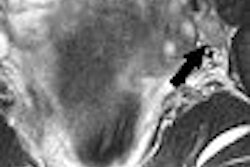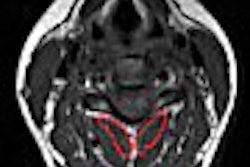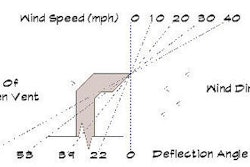CHICAGO - That nagging pain in your back might actually be caused by changes in the microstructure of your brain, according to a study presented at the 2006 RSNA meeting.
German researchers suggest their findings may be helpful to patients with chronic low back pain whose condition is often greeted with skepticism from friends, relatives, co-workers, doctors, and insurers.
"Many of these people go from doctor to doctor and are told they can't find anything wrong, yet the pain they suffer is real," said Dr. Juergen Lutz, a radiology resident at University Hospital at Ludwig-Maximilians University in Munich.
For their study, Lutz and colleagues enrolled 20 patients with chronic low back pain, which had no apparent cause. Using diffusion tensor imaging (DTI) with a 1.5-tesla MRI system, the researchers compared the brain functioning of the patients with back pain with that of 20 normal age- and sex-matched individuals without pain.
"We observed that there appears to be structural changes in the patients with pain in certain parts of the brain," Lutz explained in a press briefing on Tuesday.
Trafficking of signals appeared to increase along neural highways that usually carry pain messages in the brain, he said. He likened the increases in signaling to adding lanes to superhighways -- lanes that are soon clogged with these signals.
At the moment, the findings may only confirm that something is different in the patients who suffer pain and those that do not. "If you can tell a patient that there really is something different about their brain that might be the cause of pain, it is very important to them," Lutz said.
In the future, the use of diffusion tensor imaging may be able to track treatment of these patients and determine if medicine is working, or if the brain is changing to a more normal microstructure -- and with it relief of pain, said Dr. Zimmerman, a professor of radiology at Weill Medical College of Cornell University in New York City.
Zimmerman, the moderator of the press briefing, also suggested that the technology might be able to determine if certain drugs aimed at specific neurotransmitters are impacting the patients and recovery.
"Diffusion tensor imaging may ultimately be able to differentiate pain, and make the pain changes in the brain visible," Lutz said.
By Edward Susman
AuntMinnie.com contributing writer
November 29, 2006
Related Reading
MR sheds light on both clinical, nonclinical causes of chronic low back pain, September 26, 2006
MR overordered by primary physicians for back pain, January 31, 2006
MRI doesn't alter patient care in low back pain, study finds, November 8, 2005
Early MRI for low back pain achieves limited benefits, March 10, 2004
Chronic back pain linked to brain tissue loss, November 24, 2004
Copyright © 2006 AuntMinnie.com



















